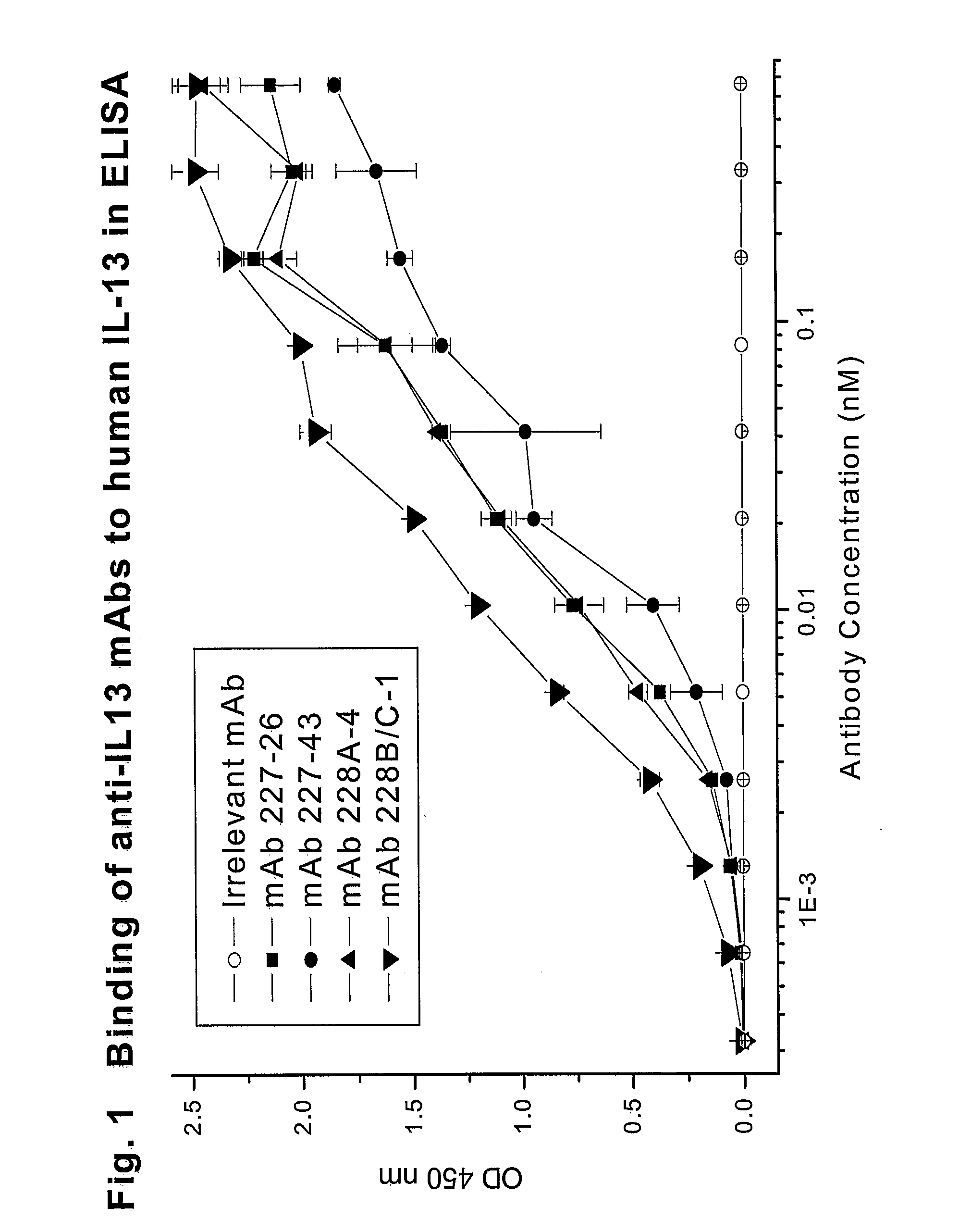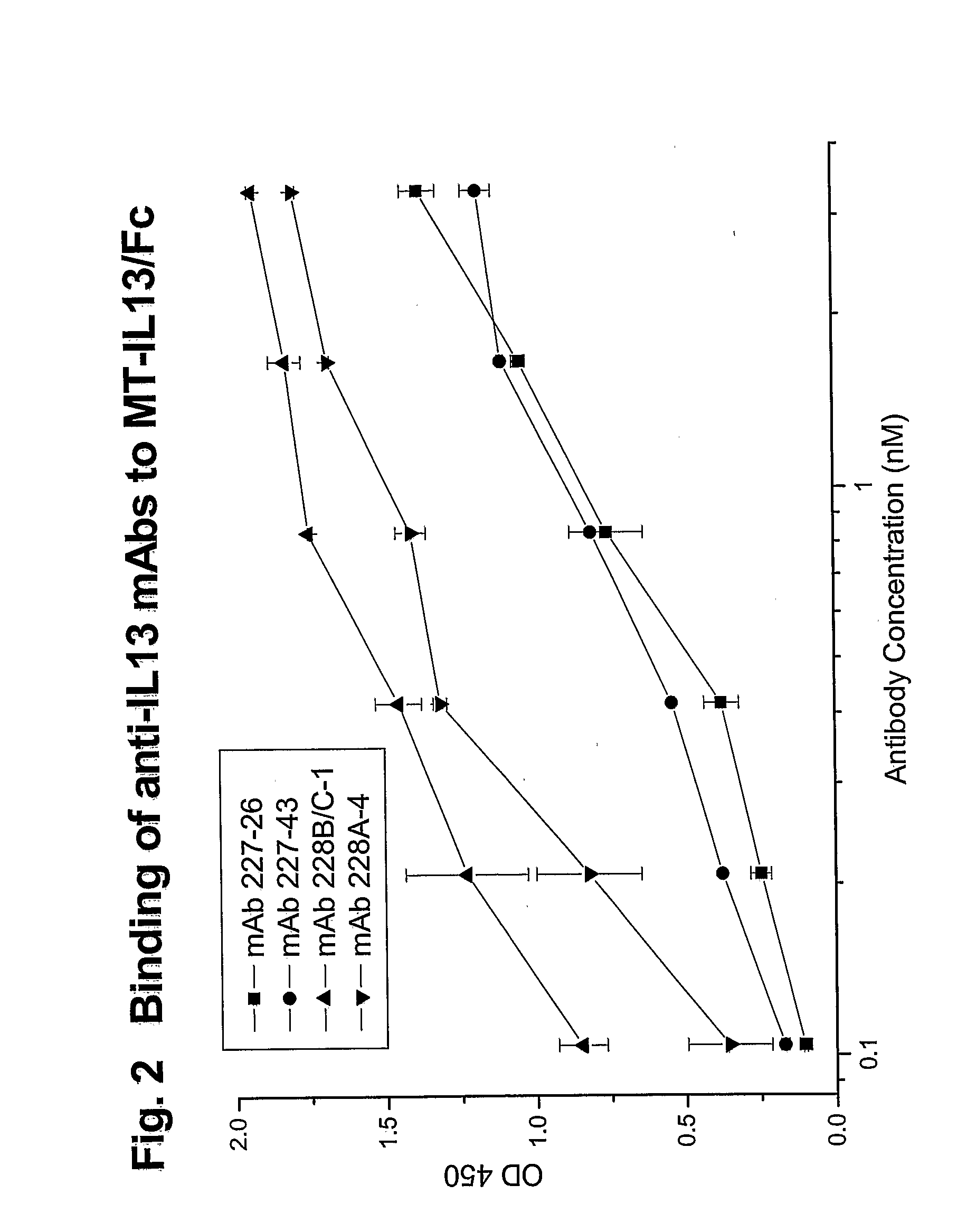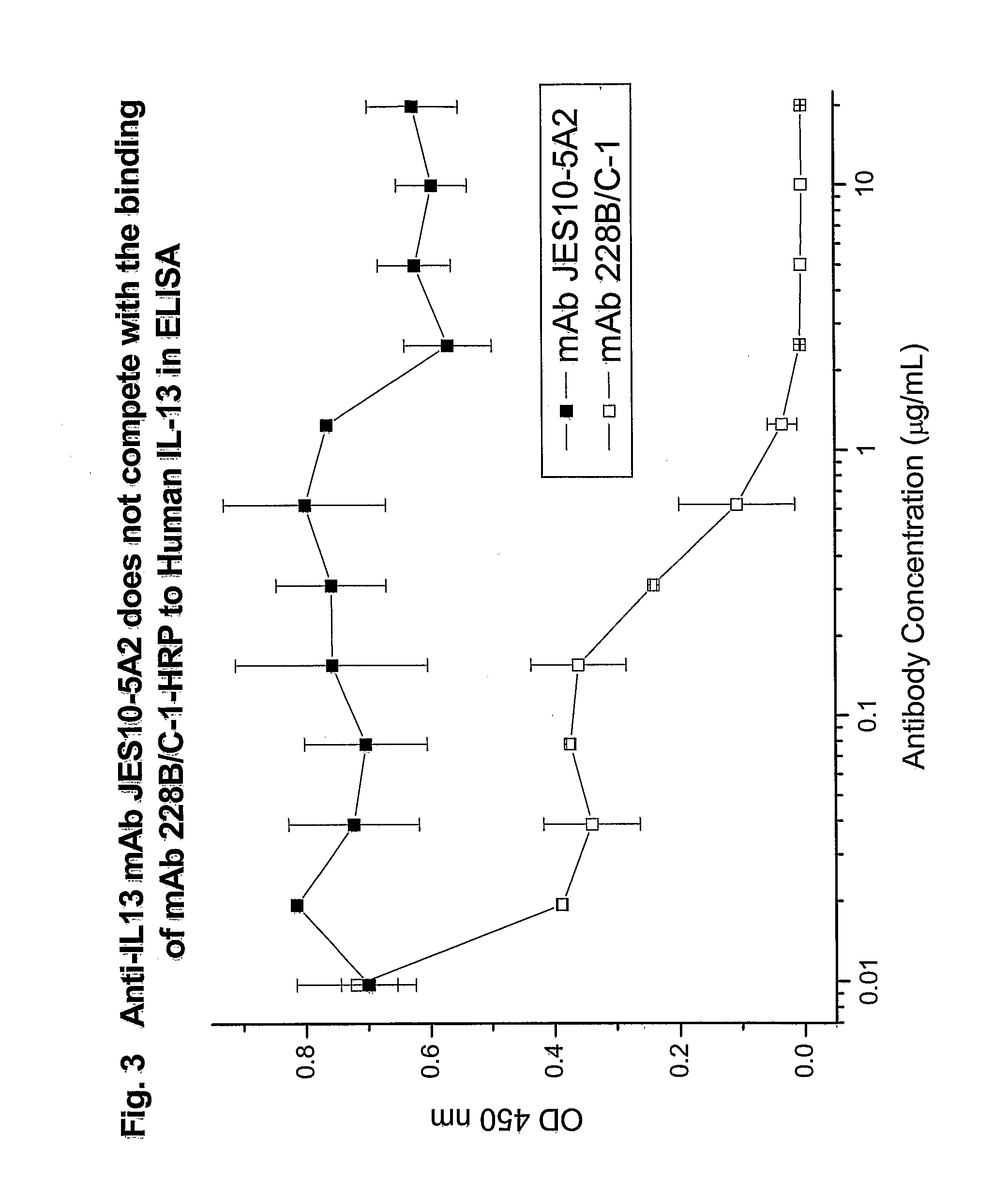Novel anti-IL13 antibodies and uses thereof
a technology of anti-il13 antibodies and antibodies, which is applied in the field of new anti-il13 antibodies, can solve the problems of affecting affecting the immune system, and disrupting the epithelium, and achieves the effect of inhibiting the production of ige antibodies
- Summary
- Abstract
- Description
- Claims
- Application Information
AI Technical Summary
Benefits of technology
Problems solved by technology
Method used
Image
Examples
example 1
Preparation of IL13 Immunogen
A Mutated, Inactive Human IL13 / Fc (MT-IL13 / Fc)
[0170]A. Cloning and Construction of an Expression Plasmid for MT-IL13 / Fc
[0171]It was reported that human IL13 with a mutation (glutamic acid to lysine) at amino acid residue #13 bound IL13Rα1 with equal or higher affinity but had lost the ability to activate IL13Rα1-bearing cells (Thompson et al., J. Biol. Chem., 274: 29944 (1999)). This mutated, inactive IL13, designated MT-IL13, was expressed in human embryonic kidney cells 293-T. The purified recombinant protein was used as the immunogen in the present invention to generate anti-IL13 monoclonal antibodies. Two oligonucleotide primers:
(SEQ ID NO 9)5′ AAGCTTTCCCCAGGCCCTGTGCCTCCCTCTACAGCCCTCAGGAAGCTCAT 3′(SEQ ID NO 10)5′ CTCGAGGTTGAACCGTCCCTCGCGAAAAAG 3′
[0172]corresponding to the oligonucleotide sequence of MT-IL13 gene were synthesized and used as templates in polymerase chain reactions (PCR) to clone the IL13 gene from human testis cDNA library (BD Bioscie...
example 2
Generation of Anti-IL13 Monoclonal Antibodies
[0178]Male A / J mice (Harlan, Indianapolis, Ind.), 8-12 weeks old, were injected subcutaneously with 20 μg MT-IL13 / Fc in complete Freund's adjuvant (Difco Laboratories, Detroit, Mich.) in 200 μL of PBS pH 7.4. At two-week intervals the mice were twice injected subcutaneously with 20 μg MT-IL13 / Fc in incomplete Freund's adjuvant. Then, two weeks later and three days prior to sacrifice, the mice were again injected intraperitoneally with 20 μg of the same immunogen in PBS. Spleen cells isolated from one or more antigen-immunized mouse were used for fusion. Similar procedures of immunization and fusion were also used with E. coli expressed human IL13 (R&D Systems) as immunogen.
[0179]In the fusion leading to the generation of the anti-IL13 MAb 228B / C-1, 26.4×106 spleen cells and 58.8×106 spleen cells from two immunized mice were combined. For each fusion, single cell suspensions were prepared from the spleen of immunized mice and used for fusi...
example 3
Reactivity of Anti-IL13 Monoclonal Antibodies with Human and Mouse IL13 in ELISA
[0184]The reactivity of various anti-IL13 monoclonal antibodies was tested by ELISA. Different wells of 96-well microtest plates were coated with either E. coli expressed non-glycosylated human IL13 (R&D Systems), 293T cell expressed glycosylated MT-IL13 / Fc, or E. coli expressed mouse IL13 (R&D Systems) by the addition of 100 μL of IL13 protein at 0.1 μg / mL in PBS. After overnight incubation at room temperature, the wells were treated with PBSTB (PBST containing 2% BSA) to saturate the remaining binding sites. The wells were then washed with PBST.
[0185]One hundred microliters of two-fold serially diluted anti-IL13 MAbs (0.5 μg / mL (3.33 nM) to 0.05 ng / mL (0.00033 nM)) were added to the wells for 1 hour at room temperature. An anti-IL13 MAb JES-5A2 from (BD Biosciences-Pharmingen, San Diego, Calif.) was also tested as a positive control. This antibody was generated by using E. coli expressed human IL13 as ...
PUM
| Property | Measurement | Unit |
|---|---|---|
| time interval | aaaaa | aaaaa |
| time interval | aaaaa | aaaaa |
| pH | aaaaa | aaaaa |
Abstract
Description
Claims
Application Information
 Login to View More
Login to View More - R&D
- Intellectual Property
- Life Sciences
- Materials
- Tech Scout
- Unparalleled Data Quality
- Higher Quality Content
- 60% Fewer Hallucinations
Browse by: Latest US Patents, China's latest patents, Technical Efficacy Thesaurus, Application Domain, Technology Topic, Popular Technical Reports.
© 2025 PatSnap. All rights reserved.Legal|Privacy policy|Modern Slavery Act Transparency Statement|Sitemap|About US| Contact US: help@patsnap.com



